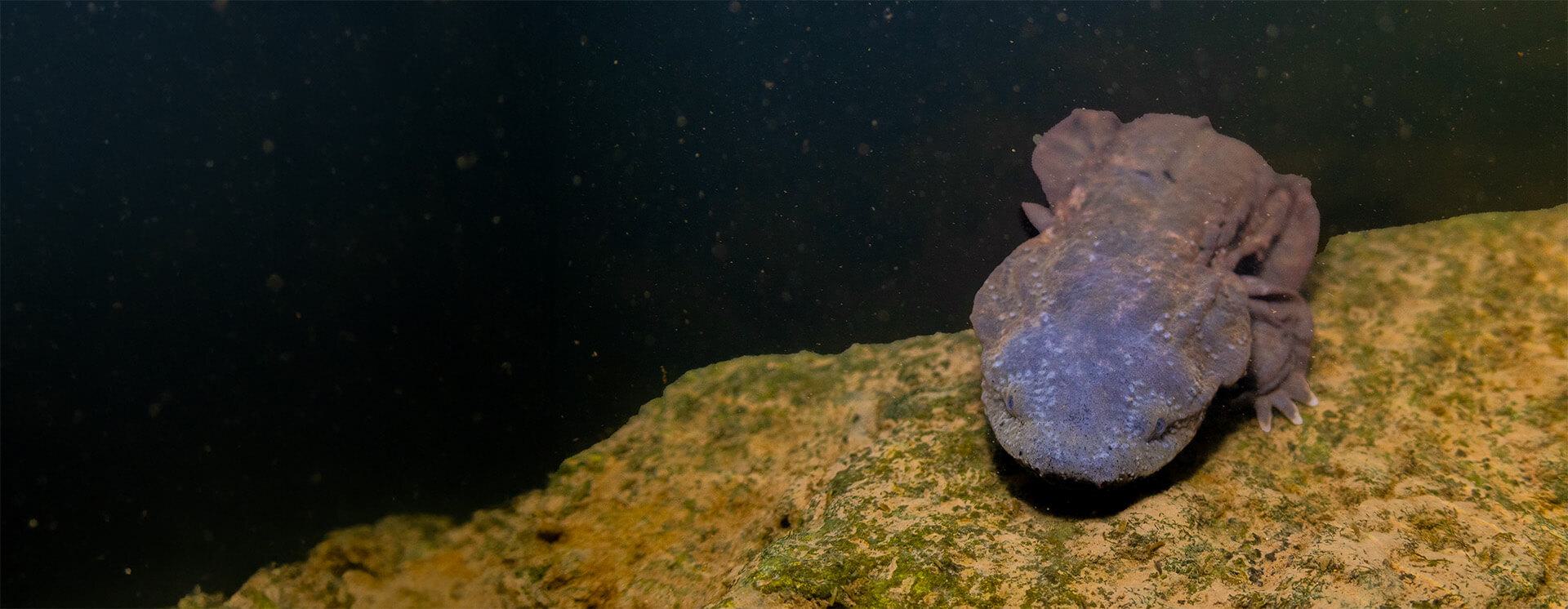
Ron and Karen Goellner Center for Hellbender Conservation

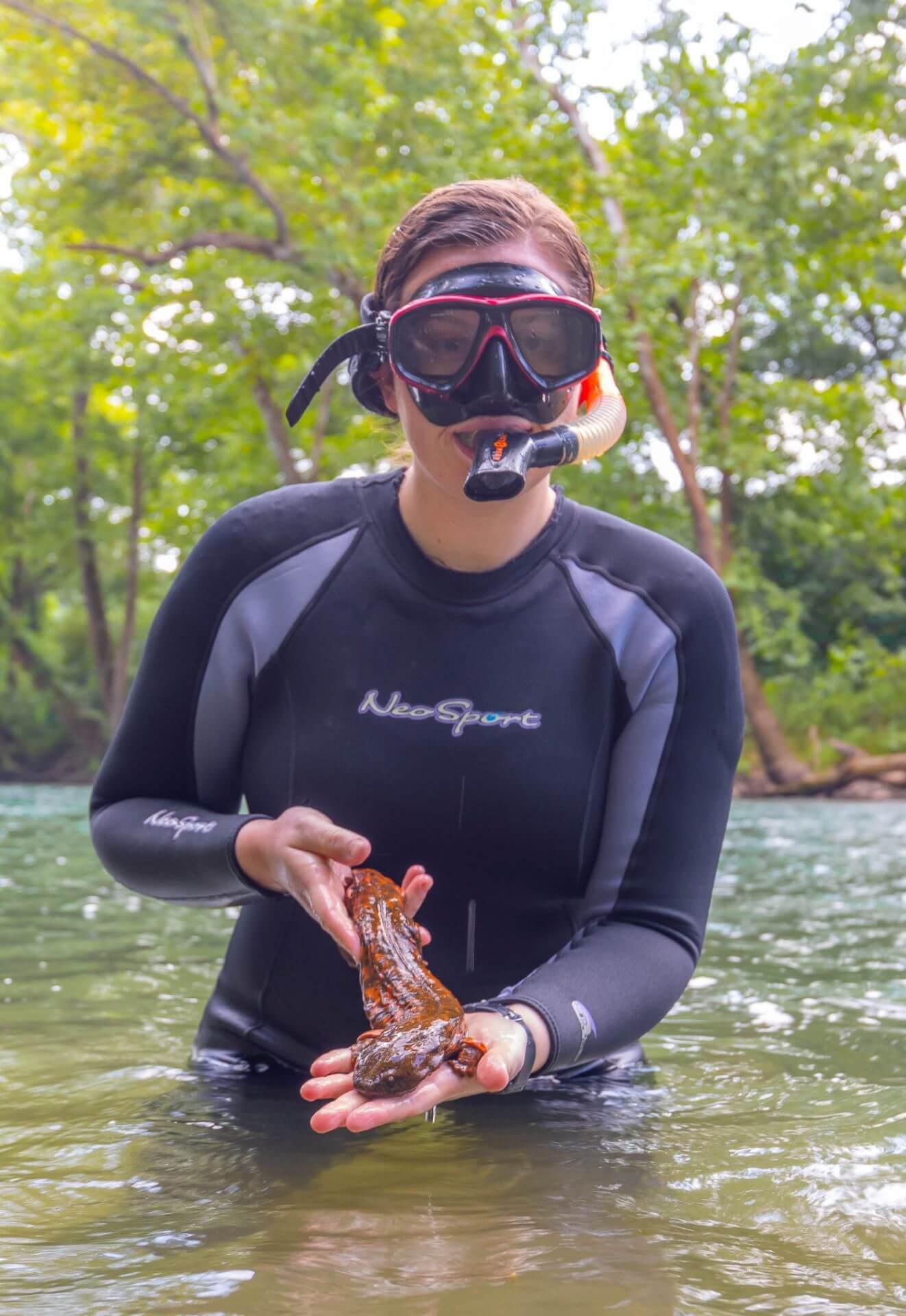
Goal
Through this Center, our hope is for hellbender populations in Missouri to rebound to pre-decline levels. Protecting hellbender populations and their habitats is essential for the overall wellbeing of the ecosystems in which they live. These animals are incredibly important for ecosystems because they serve as indicators of environmental health, help maintain biodiversity, and play various roles in the food web. Hellbenders act as symbols of clean, pristine freshwater ecosystems, and we hope to promote clean waterways through this Center as well as aid in the rebounding of Missouri’s hellbenders.
Background
The hellbender is the largest species of salamander native to North America and is considered a living fossil, as they have been in Missouri waterways basically unchanged for tens of thousands of years. Hellbenders spend their entire lives in fast flowing and heavily oxygenated streams with plenty of rocks to hide under and hunt between.
There are two subspecies of hellbender, the eastern and the Ozark. Missouri is the only state where both occur, and both are threatened with extinction. Over the past 40 years, hellbender populations in Missouri have experienced drastic 70% declines due to stream impoundments, disease, pollution and siltation. Because of these major declines, this native species has been a major conservation priority for the Saint Louis Zoo for some time.
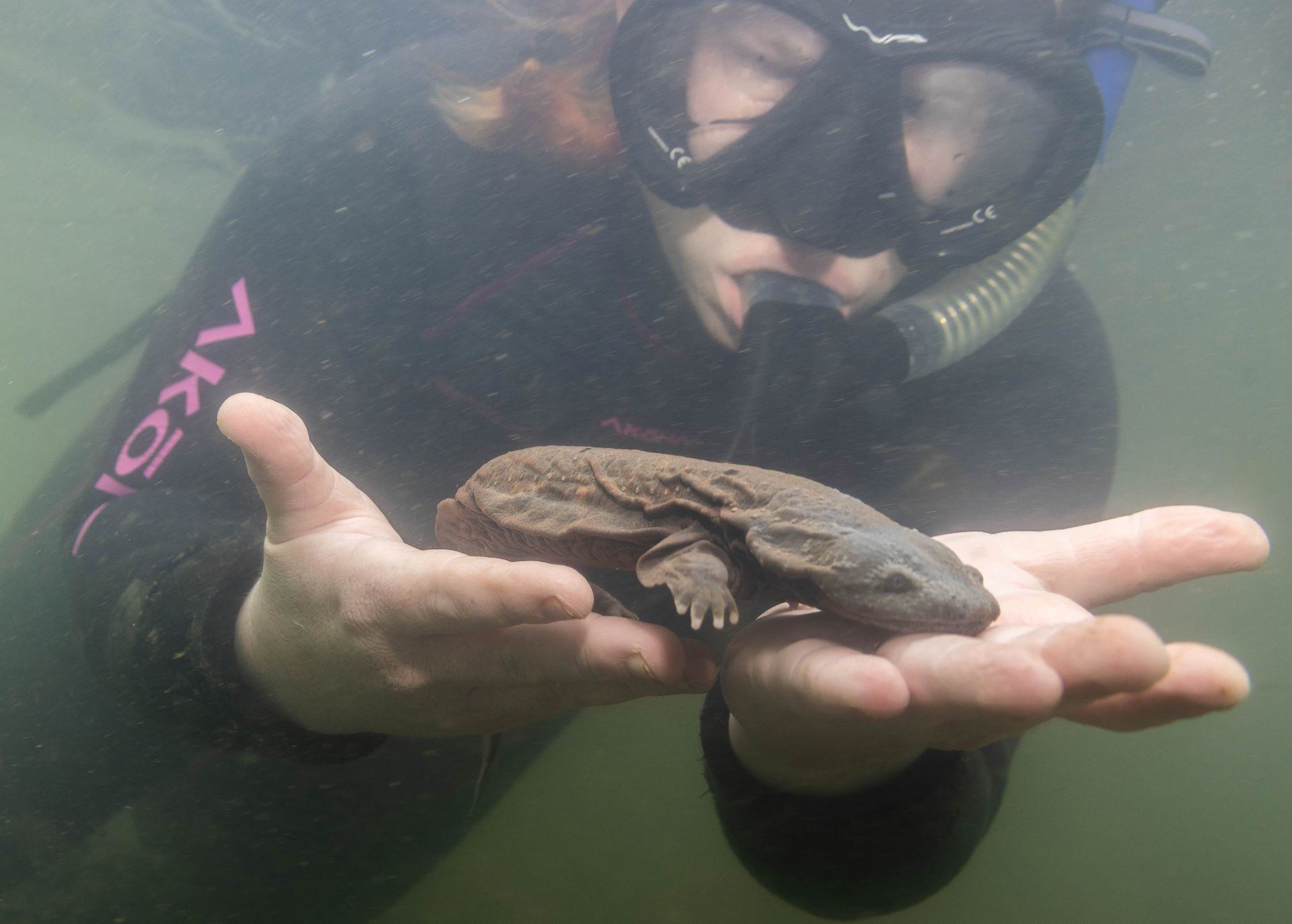
The Saint Louis Zoo, through the Ron and Karen Goellner Center for Hellbender Conservation, has been working with the Missouri Department of Conservation (MDC) and U.S. Fish and Wildlife Service (USFWS) to rear, breed and head-start hellbenders for release back into Missouri’s Ozark rivers and streams. We do this in four, state-of-the-art, climate-controlled facilities, behind the scenes in the Zoo’s Herpetarium with the hard work of Zoo keeper staff, who work solely with hellbenders. Together with our partners we have released over 10,000 of these amazing animals to the wild. Through these efforts, it’s estimated we have bought the species an additional 30 years of survival, as we learn how to best mitigate the problems causing their decline.
Hellbenders are indicators of healthy, clean water. If they are present in a river system we know there is good overall health, which has huge implications for communities living alongside these rivers. The Zoo works very closely with MDC and other partners, and through these collaborations we have made huge strides in hellbender conservation.
Some milestones include:
- In 2011, the Saint Louis Zoo and MDC announced that Ozark hellbenders had been bred in human care at the Zoo — a world's first for either of the two subspecies of hellbender. The decade-long collaboration yielded 165 baby hellbenders.
- In November 2012, the Center announced that eight female Ozark hellbenders had laid a total of 2,809 fertile eggs in the Zoo’s simulated streams. By late November, the Center had more than 1,000 larvae. For the first time, all three of the Zoo’s distinct river populations had reproduced.
- In 2018, the first generation of zoo-bred hellbenders successfully bred at the Saint Louis Zoo, producing a second generation of zoo-bred animals.
- In 2022, the 10,000th hellbender was released into an Ozark river by the Missouri Department of Conservation and the Zoo.
- In spring 2023, it was announced that a Zoo-raised and released Ozark hellbender was found guarding a healthy clutch of eggs in the wild. Later in 2023, a Zoo-raised and released eastern hellbender was found guarding a clutch, showing us that both subspecies are capable of reproducing in the wild after being released.
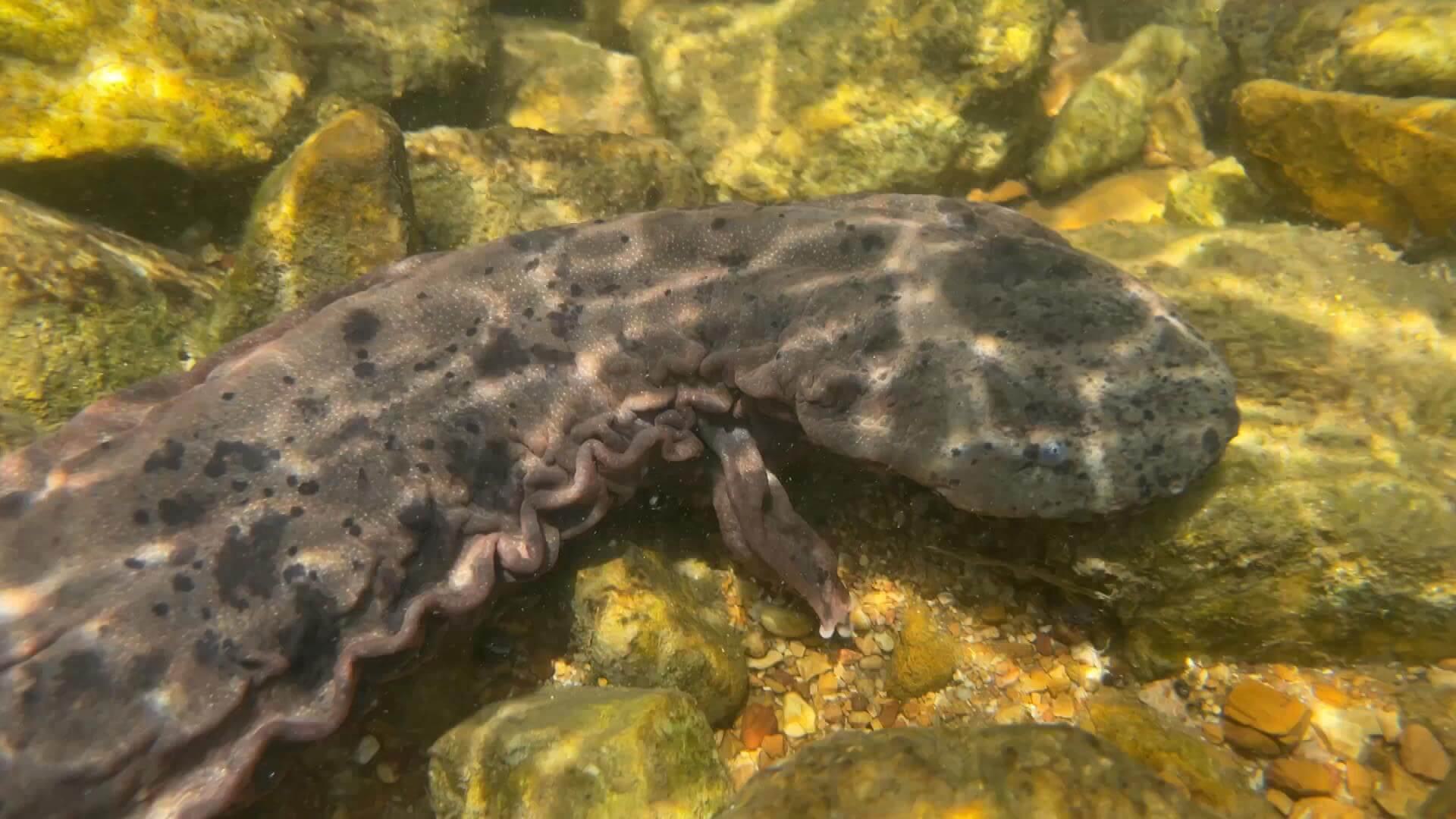
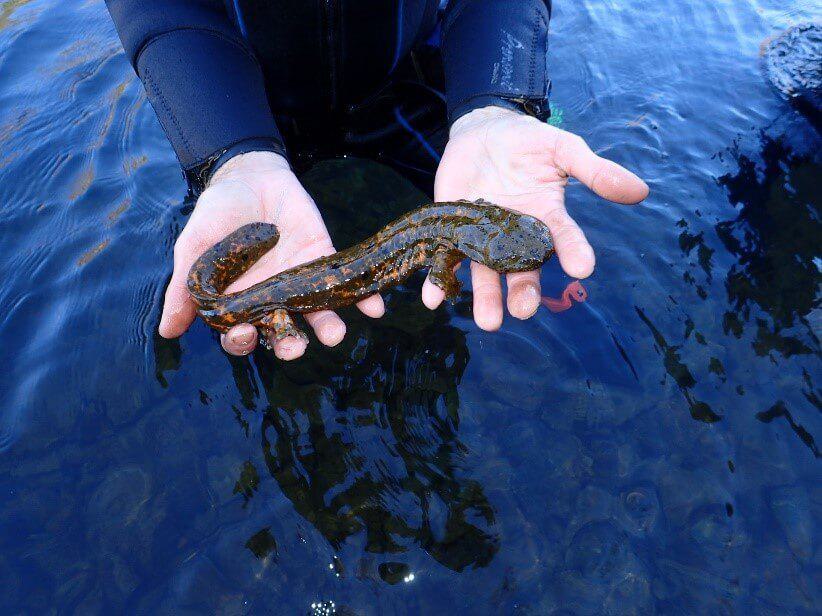
Conservation Science
Working with our partners, the Center concentrates not only on conservation breeding but also on assisting the MDC and USFWS with research projects that deal with stream quality assessments and hellbender population evaluations. This is important, as conservation science focused on hellbenders plays a crucial role in preserving these remarkable amphibians and their aquatic habitats.
We assist our partners in a multidisciplinary approach to study hellbender populations, combining field surveys, genetics, and ecological monitoring. By carrying out research to better understand hellbender biology, reproduction, and disease susceptibility, we have been able to inform strategies for breeding in human care and reintroduction.
By advancing our knowledge of hellbenders and their ecosystems, along with conducting extensive water quality monitoring in hellbender habitats, this application of conservation science aims to ensure the survival of these ancient and culturally significant species for future generations.
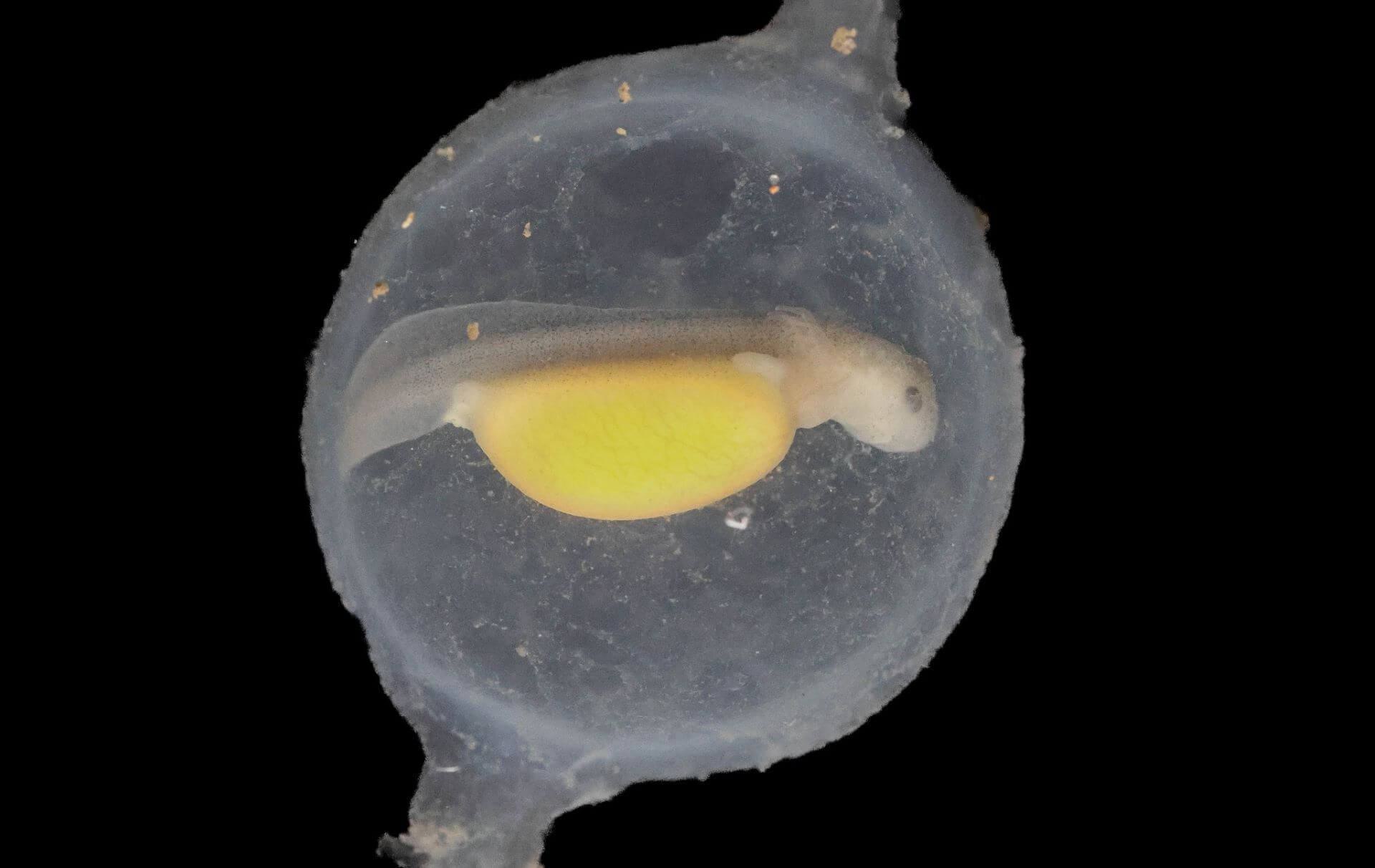
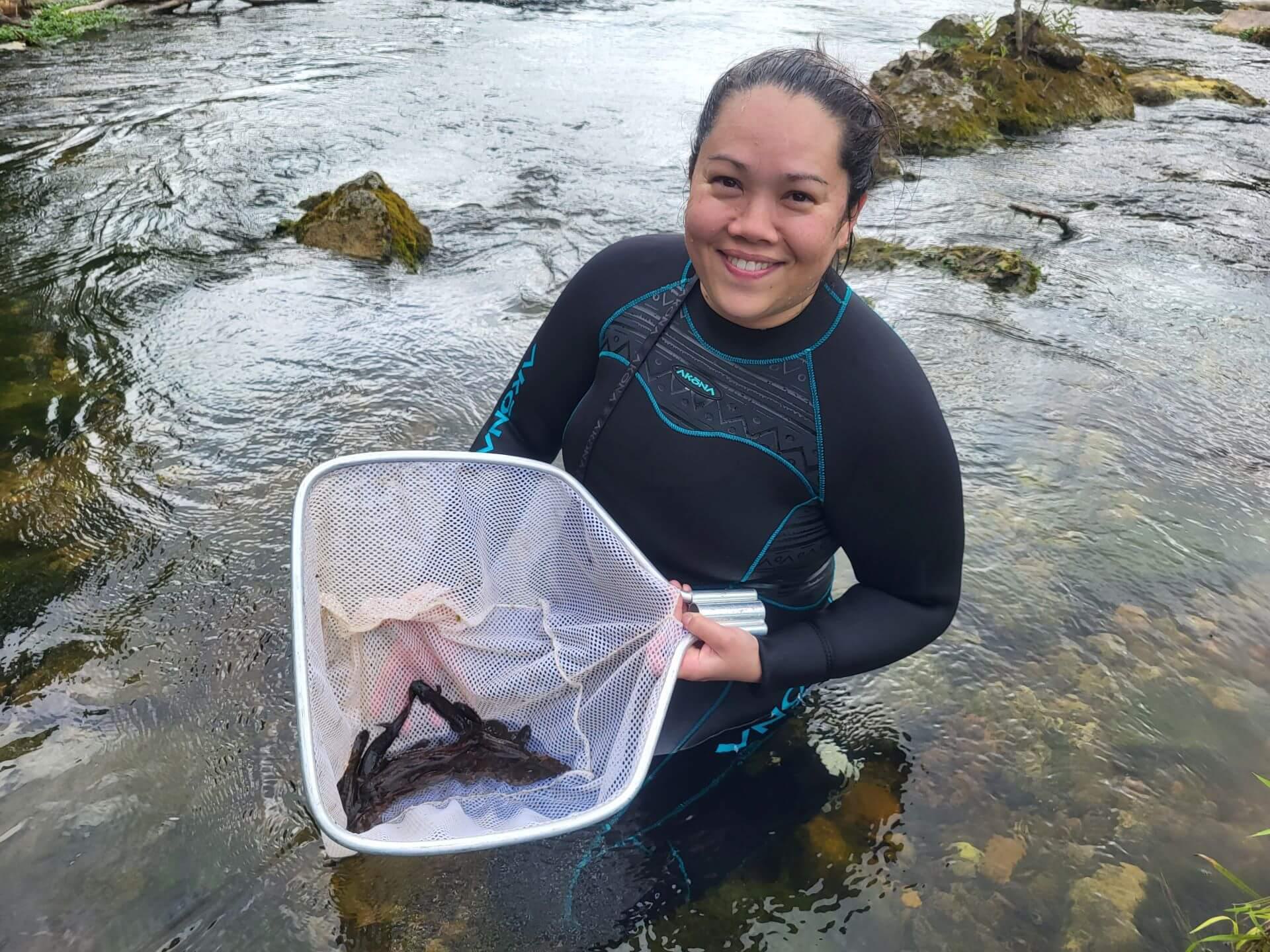
Awards
AZA North American Conservation Award
The Saint Louis Zoo received Significant Achievement in the Association of Zoos and Aquariums’ (AZA) 2016 North American Conservation Award for its Ozark Hellbender Augmentation Program. This award recognizes exceptional efforts toward regional habitat preservation, species restoration and support of biodiversity in the wild.
Edward H. Bean Award
The Association of Zoos and Aquariums 2012 Edward H. Bean Award was presented to the Zoo for its “Propagation, Head-start and Conservation Program for the Ozark Hellbender.” One of AZA's most historic awards, the Edward H. Bean Award recognizes a truly significant zoo propagation effort that clearly enhances the conservation of the species.
Outstanding Collaborator of the Year Award
The Center for Hellbender Conservation received the Missouri Department of Conservation Outstanding Collaborator of the Year Award in May 2010. The award recognizes the Zoo's Herpetarium staff, as well as its veterinary and life support departments, for being key players in conservation efforts for hellbenders in Missouri and nationally, particularly in regards to zoo propagation efforts.
The Zoo was commended for being devoted not only to hellbender conservation, but also to working with MDC and other partners. "The Zoo has always been a strong supporter of amphibian and reptile conservation in Missouri and has graciously assisted MDC with many surveys, questions and issues that have arisen over the years," stated Dr. Jeff Briggler, herpetologist with the MDC Resource Division. "This dedication to amphibian and reptile conservation in Missouri has been the result of over 40 years of collaboration between the Zoo and MDC herpetologists."
A special award was also presented to Karen Goellner, wife of the late Ron Goellner, for continuing to raise funds and create awareness for hellbender conservation.
Saint Louis Zoo Conservation Award Given to Jeff Briggler
The 2012 Saint Louis Zoo Conservation Award was awarded to Jeff Briggler, Ph.D., Herpetologist for the Missouri Department of Conservation. Since 2001, he has worked with the Zoo to lead the hellbender conservation efforts in Missouri and is considered one of the nation’s leading hellbender experts.
Center’s Namesake
This center is named in honor of Ron Goellner, who served as the Zoo’s Director of Animal Collections and led the way in hellbender conservation at the Zoo until his passing in 2006. It is also named in honor of his wife, Karen, who was a huge advocate for hellbender conservation until her passing in 2022. We are honored to carry out their work in their names.
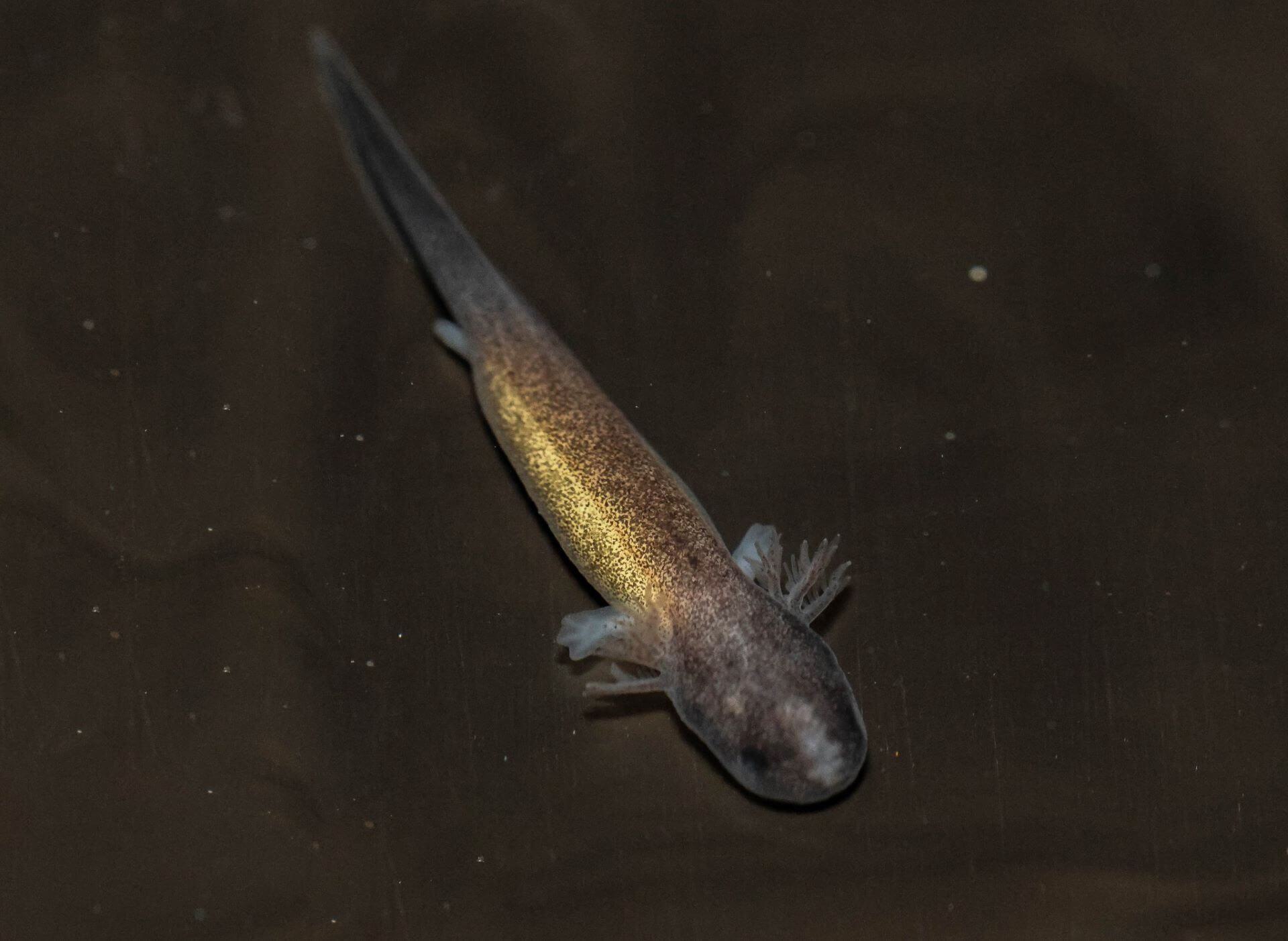
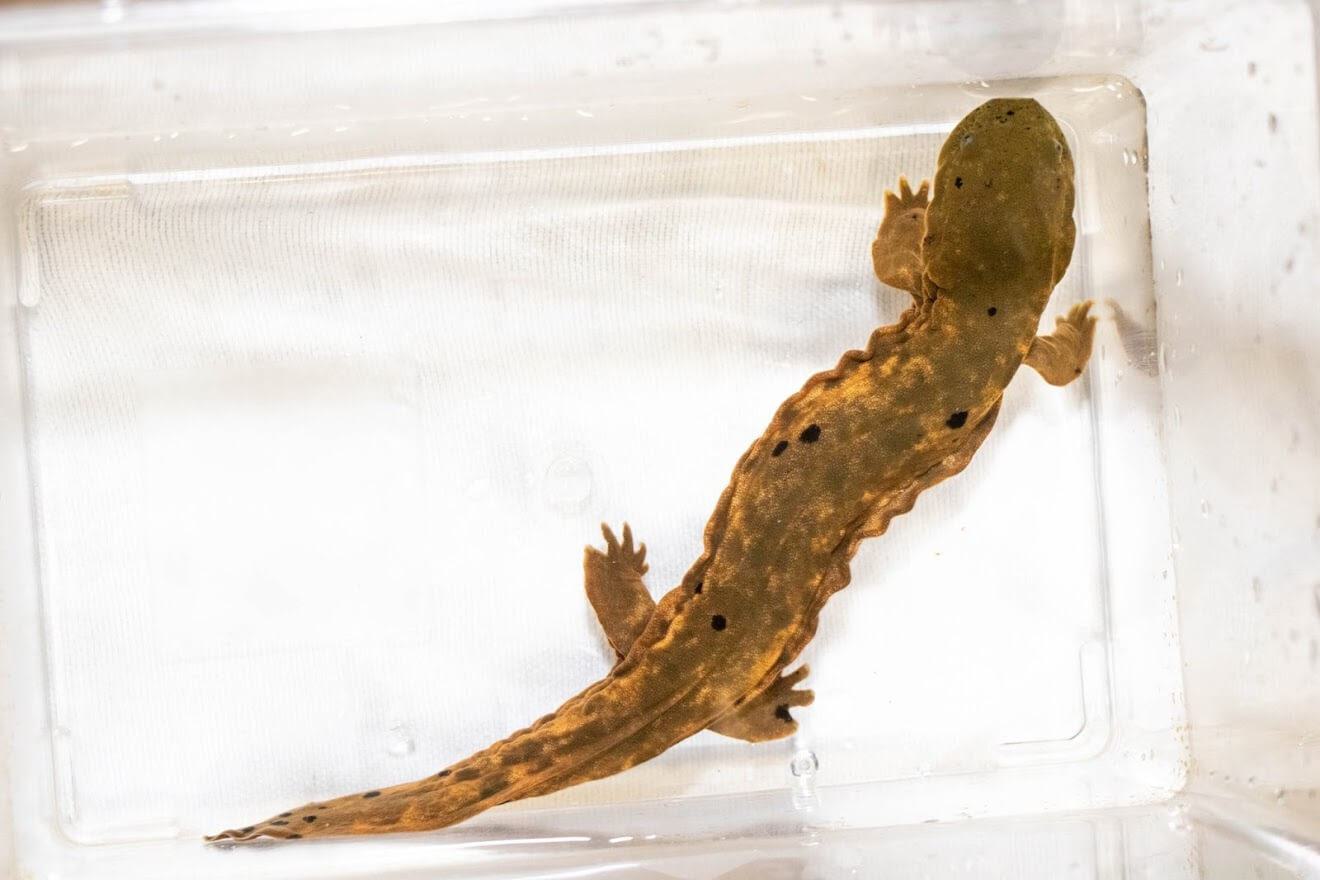
Partners
Missouri Department of Conservation
U.S. Fish and Wildlife Service
National Park Service
US Forest Service
Stone Hill Winery
Edward K. Love Conservation Foundation

